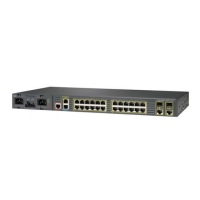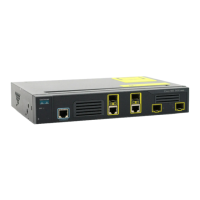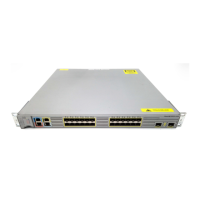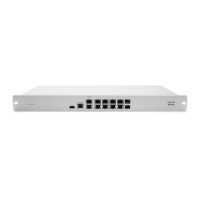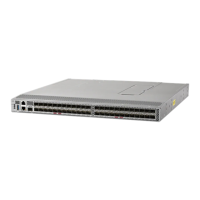35-29
Cisco ME 3400 Ethernet Access Switch Software Configuration Guide
OL-9639-07
Chapter 35 Configuring IP Unicast Routing
Configuring OSPF
Use the no form of the ip ospf network command to return to the default network type for the media.
Configuring OSPF Area Parameters
You can optionally configure several OSPF area parameters. These parameters include authentication for
password-based protection against unauthorized access to an area, stub areas, and not-so-stubby-areas
(NSSAs). Stub areas are areas into which information on external routes is not sent. Instead, the area
border router (ABR) generates a default external route into the stub area for destinations outside the
autonomous system (AS). An NSSA does not flood all LSAs from the core into the area, but can import
AS external routes within the area by redistribution.
Step 4
ip ospf network {broadcast | non-broadcast
| {point-to-multipoint [non-broadcast] |
point-to-point}}
Configure the OSFP network type for the specified interface. Select
one of these network types:
• broadcast—Specify an OSPF broadcast multi-access network.
• non-broadcast—Specify an OSPF NBMA network.
• point-to-multipoint—Specify an OSPF point-to-multipoint
network. If you do not enter another keyword, the interface is
point-to-multipoint for broadcast media.
• point-to-multipoint non-broadcast—Specify an OSPF
nonbroadcast point-to-multipoint network.
• point-to-point—Specify an OSPF point-to-point network.
Step 5
exit Return to global configuration mode.
Step 6
router ospf process-id (Optional for point-to-multipoint; required for point-to-multipoint
nonbroadcast) Configure an OSPF routing process and enter router
configuration mode.
Step 7
neighbor ip-address cost number (Optional for point-to-multipoint; required for point-to-multipoint
nonbroadcast). Specify a configured OSPF neighbor and assign a
cost to the neighbor.
• ip-address—Enter the interface IP address of the OSPF
neighbor.
• cost number—Specify a cost for the neighbor as an integer from
1 to 65535.
Note On point-to-multipoint broadcast networks, specifying a
neighbor is optional, but if you do specify a neighbor, you
must specify a cost for that neighbor.
On point-to-multipoint nonbroadcast neighbors, you must
specify a neighbor, but assigning a cost to the neighbor is
optional. If not specified, neighbors assume the cost of the
interface, based on the ip ospf cost interface configuration
command.
Step 8
end Return to privileged EXEC mode.
Step 9
show ip ospf interface [interface-id] Display OSPF-related interface information.
Step 10
copy running-config startup-config (Optional) Save your entries in the configuration file.
Command Purpose
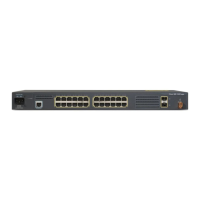
